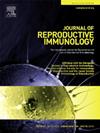蛋白质组范围孟德尔随机化和共定位分析揭示卵巢过度刺激综合征的潜在治疗靶点
IF 2.9
3区 医学
Q3 IMMUNOLOGY
引用次数: 0
摘要
卵巢过度刺激综合征(OHSS)是一种与辅助生殖技术相关的严重并发症,以代谢、免疫和血管疾病为特征。了解OHSS的分子机制可以揭示潜在的治疗靶点并改善患者的预后。在这项研究中,我们旨在利用蛋白质组范围内的孟德尔随机化(MR)和共定位分析来鉴定与OHSS相关的血浆蛋白,并通过药物性评估来评估它们作为治疗靶点的潜力。我们采用全蛋白质组MR分析、基于数据的孟德尔随机化(SMR)分析和全现象关联研究(PheWAS)分析来建立血浆蛋白与OHSS之间的因果关系。共定位分析证实了与OHSS相关的蛋白质和遗传信号之间的重叠。通过通路和网络分析来探索生物功能和蛋白质相互作用,同时查询药物靶点数据库以寻找潜在的治疗干预措施。结果表明,superabasin (SBSN)、SLAMF4 (CD244)、Enolase 3 (ENO3)和Thioredoxin domain containing protein 12 (TXNDC12)等4个关键蛋白是OHSS的重要影响因子。通路富集和相互作用分析进一步支持它们参与与OHSS相关的代谢、免疫和结构通路。共定位蛋白的药物可用性揭示了ENO3(2-脱氧-d -葡萄糖)、CD244(来那度胺)和TXNDC12(金嘌呤)的潜在药物靶点,而SBSN的潜在药物靶点尚未确定。总的来说,我们的研究通过MR和共定位分析确定了15种血浆蛋白,包括SBSN、CD244、ENO3和TXNDC12,是OHSS风险的关键因素。这些蛋白参与代谢调节、免疫反应和抗氧化途径,突出了潜在的治疗靶点,为治疗策略提供了新的方向。本文章由计算机程序翻译,如有差异,请以英文原文为准。
Potential therapeutic targets for ovarian hyperstimulation syndrome revealed by proteome-wide mendelian randomization and colocalization analysis
Ovarian hyperstimulation syndrome (OHSS) is a severe complication associated with assisted reproductive technologies, characterized by metabolic, immune and vascular disorders. Understanding the molecular mechanisms underlying OHSS could reveal potential therapeutic targets and improve patient outcomes. In this study, We aimed to utilize proteome-wide Mendelian randomization (MR) and colocalization analysis to identify plasma proteins associated with OHSS and evaluate their potential as therapeutic targets through druggability assessment. We employed proteome-wide MR analysis summary data-based Mendelian randomization (SMR) analysis and phenome-wide association study (PheWAS) analysis to establish causal relationships between plasma proteins and OHSS. Colocalization analysis confirmed overlaps between proteins and genetic signals associated with OHSS. Pathway and network analyses were conducted to explore biological functions and protein interactions, while drug-target databases were queried for potential therapeutic interventions. Our results showed that 4 key proteins, including Suprabasin (SBSN), SLAMF4 (CD244), Enolase 3 (ENO3) and Thioredoxin domain-containing protein 12 (TXNDC12) were identified as significant contributors to OHSS. Pathway enrichment and interaction analyses further supported their involvement in metabolic, immune and structural pathways related to OHSS. Drug availability for colocalized proteins reveled potential drug targets for ENO3 (2-deoxy-D-glucose), CD244 (lenalidomide) and TXNDC12 (Auranofin), while no potential drug targets were identified for SBSN. Over all, our study identified15 plasma proteins, including SBSN, CD244, ENO3, and TXNDC12, as key contributors to the risk of OHSS through MR and colocalization analysis. These proteins were involved in metabolic regulation, immune response and antioxidant pathways, highlighting potential therapeutic targets and suggesting new directions for treatment strategies.
求助全文
通过发布文献求助,成功后即可免费获取论文全文。
去求助
来源期刊
CiteScore
6.30
自引率
5.90%
发文量
162
审稿时长
10.6 weeks
期刊介绍:
Affiliated with the European Society of Reproductive Immunology and with the International Society for Immunology of Reproduction
The aim of the Journal of Reproductive Immunology is to provide the critical forum for the dissemination of results from high quality research in all aspects of experimental, animal and clinical reproductive immunobiology.
This encompasses normal and pathological processes of:
* Male and Female Reproductive Tracts
* Gametogenesis and Embryogenesis
* Implantation and Placental Development
* Gestation and Parturition
* Mammary Gland and Lactation.

 求助内容:
求助内容: 应助结果提醒方式:
应助结果提醒方式:


